Discover 11 hidden attractions, cool sights, and unusual things to do in Sevenoaks (United Kingdom). Don't miss out on these must-see attractions: Knole House, Ightham Mote, and Chiddingstone Castle. Also, be sure to include Lullingstone Roman Villa in your itinerary.
Below, you can find the list of the most amazing places you should visit in Sevenoaks (England).
Table of Contents
Knole House
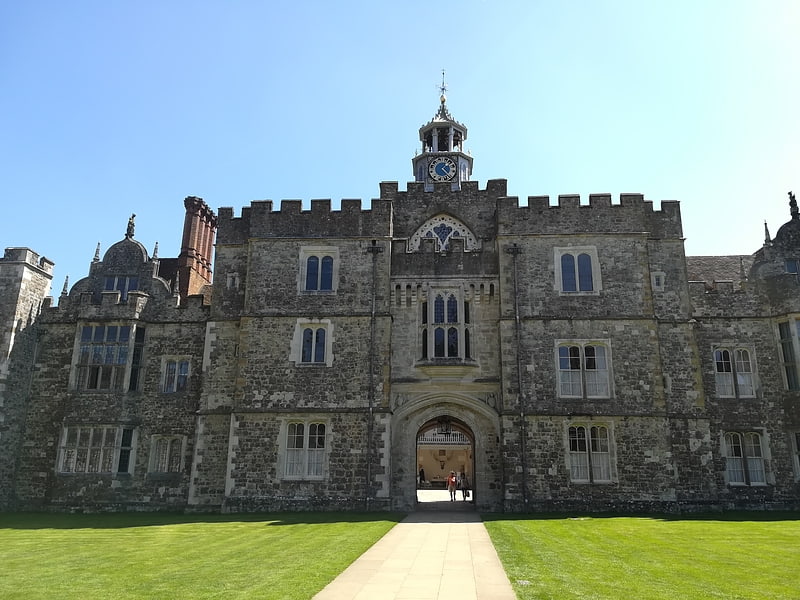
Building in England. Knole is a country house and former archbishop's palace owned by the National Trust. It is situated within Knole Park, a 1,000-acre park located immediately to the south-east of Sevenoaks in west Kent. The house ranks in the top five of England's largest houses, under any measure used, occupying a total of four acres.
The current house dates back to the mid-15th century, with major additions in the 16th and, particularly, the early 17th centuries. Its grade I listing reflects its mix of late-medieval to Stuart structures and particularly its central façade and state rooms. In 2019 an extensive conservation project, "Inspired by Knole", was completed to restore and develop the structures of the buildings and thus help to conserve its important collections. The surrounding deer park has also survived with varying degrees of management in the 400 years since 1600.[1]
Address: Knole House Knole, TN15 0RP Sevenoaks
Ightham Mote
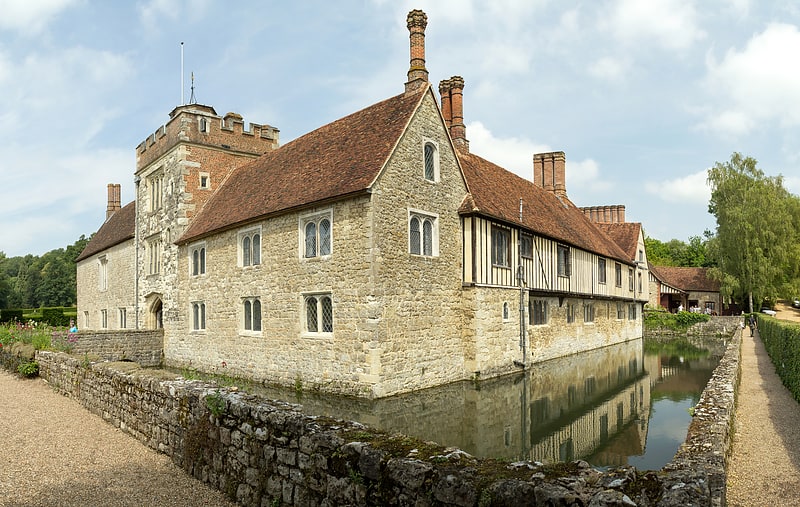
Building in Ivy Hatch, England. Ightham Mote, Ightham, Kent is a medieval moated manor house. The architectural writer John Newman describes it as "the most complete small medieval manor house in the county". Ightham Mote and its gardens are owned by the National Trust and are open to the public. The house is a Grade I listed building, and parts of it are a Scheduled Ancient Monument.[2]
Address: Mote Rd, TN15 0NT Sevenoaks
Chiddingstone Castle
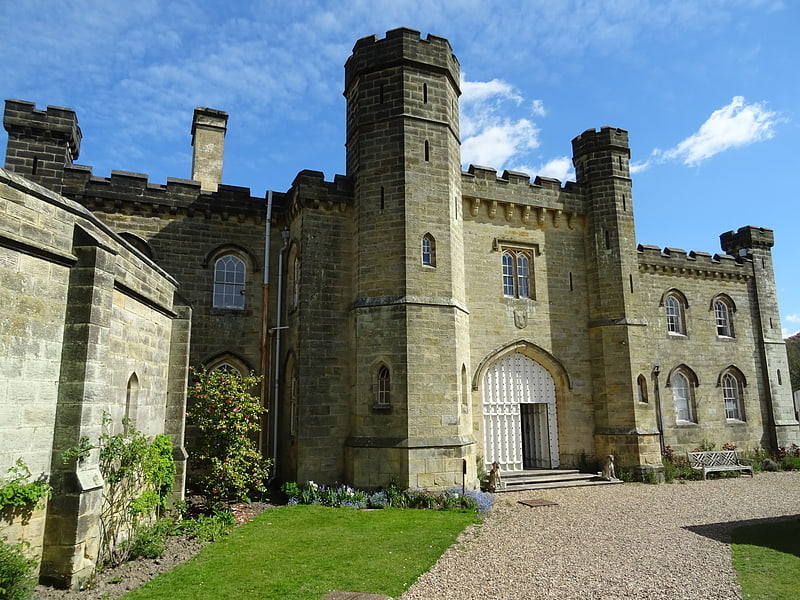
Building in Chiddingstone, England. Chiddingstone Castle is situated in the village of Chiddingstone, near Edenbridge, Kent, England, 35 miles south-southeast of London and in the upper valley of the River Medway. The castle was built by the Streatfeild family and served as their seat from the early 16th century until the beginning of the 20th century when the family left the castle. The Streatfeilds sold the castle to Lord Astor in 1938. Since 1977, the castle and its 35 acres of grounds have been held in trust for the nation by the Denys Eyre Bower Bequest, and both are open to the public. Much of the current structure dates from the early 19th century, but incorporates elements of the earlier buildings on the same site.[3]
Lullingstone Roman Villa
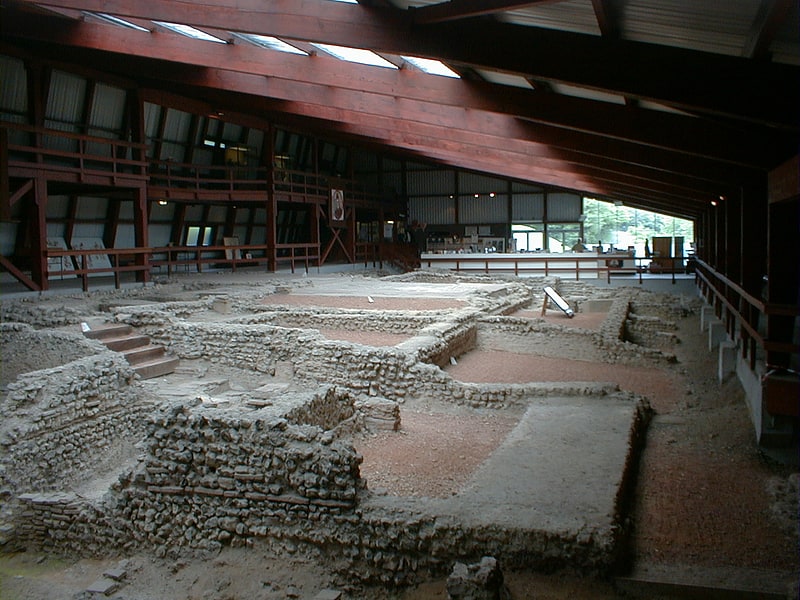
Lullingstone Roman Villa is a villa built during the Roman occupation of Britain, situated in Lullingstone near the village of Eynsford in Kent, south eastern England. The villa is located in the Darent Valley, along with six others, including those at Crofton, Crayford and Dartford. Constructed in the 1st century, perhaps around 80-90 CE, the house was repeatedly expanded and occupied until it was destroyed by fire in the 4th or 5th century. The villa was occupied over various periods within the Romano-British period, but after its destruction, it is only thought to have been reoccupied during the Medieval Times. The occupants were most likely wealthy Romans or native Britons who had adopted Roman customs.
Some evidence found on site suggests that around 150 CE, the villa was considerably enlarged and may have been used as the country retreat of the governors of the Roman province of Britannia. Two sculpted marble busts found in the cellar may be those of Pertinax, governor in 185-186, and his father-in-law, Publius Helvius Successus. In the 4th century a room, probably already in religious use, was converted to a Christian chapel or house church, much the earliest known in the British Isles.
In the Anglo-Saxon period, the ruins of a Roman temple-mausoleum on the site of the villa were incorporated into a Christian chapel (Lullingstone Chapel) that was extant at the time of the Norman Conquest, one of the earliest known chapels in the country.
In addition to the pagan shrine in the villa's chapel and the dining room mosaics, the villa produced significant artistic finds including the Lullingstone Victory Gem and the busts.[4]
Address: Lullingstone Ln, DA4 0JA Eynsford
Riverhill House

Manor house in England. Riverhill House is a Grade II listed rag-stone Queen Anne manor house located on the southern edge of Sevenoaks in Kent, England. The house and estate, of 130 acres, are located directly to the south of Knole Park, near to the villages of Sevenoaks Weald and Underriver. The gardens are open to the public from March to September.
Originally built on the site of a Tudor farmstead in 1714, Riverhill House and estate were purchased in 1840 by John Rogers. A keen botanist and a contemporary of Charles Darwin, Rogers purchased the property because of its sheltered location and lime-free soil. Rogers was an early member of the Royal Horticultural Society and a patron of Victorian plant-hunters.
The house has been enlarged and improved since then, by subsequent generations of the Rogers family up until 1900. Today the house is still a family home in private ownership of the Rogers family.
The Riverhill estate include gardens first established by John Rogers in 1842. The huge Turkey oak at the front of the house was brought back as an acorn by a previous owner returning from the Crimean War. The garden also has cedar trees planted in the 1840s.
In March 2010 Riverhill House was the subject of a Channel 4 television documentary presented by hotelier Ruth Watson as part of the Country House Rescue series. The documentary featured the current owner and director of the house Jane Margaret Rogers and leading maze designer Adrian Fisher.[5]
Emmetts Garden

Emmetts Garden is an Edwardian estate located at Ide Hill, near Sevenoaks in Kent, UK. It is now owned by the National Trust for Places of Historic Interest or Natural Beauty.[6]
Address: Ide Hill, TN14 6BA Sevenoaks
Knole Park

Park in England. Knole Park is a 383.4-hectare biological Site of Special Scientific Interest in Sevenoaks in Kent. About 43 acres of the park belongs to the National Trust as does Knole House, which sits within it. The remaining parkland is privately owned by the Knole Estate. It is in the Kent Downs Area of Outstanding Natural Beauty.
The park has acidic woodland, parkland, woods and ponds. It has the best ancient woodland invertebrates in the county, including the nationally rare beetle Platypus cylindrus and several nationally scarce species, and it also has a rich fungus flora.
The park is open to the public and has a herd of around 350 deer, both fallow deer and Sika deer, which are owned and managed by the Knole Estate.
The golf course of Knole Park Golf Club is located within Knole Park.
The park was the location for the Beatles' "Strawberry Fields Forever" promotional video.[7]
The Stag Community Arts Centre
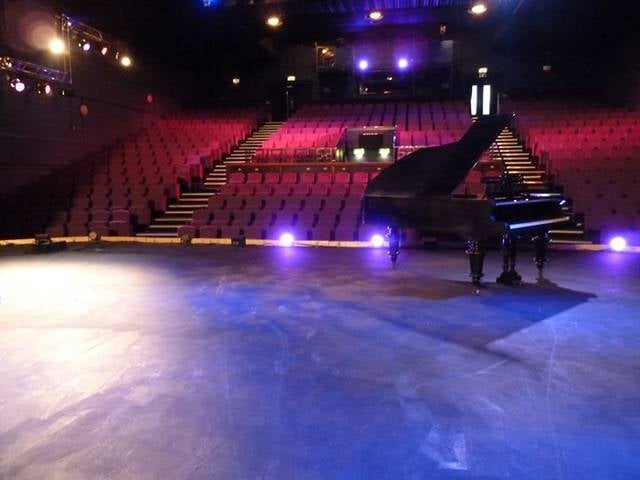
Concerts and shows, Entertainment, Cinema, Theater
Address: 13 London Rd, TN13 1AH Sevenoaks
Sevenoaks Wildlife Reserve
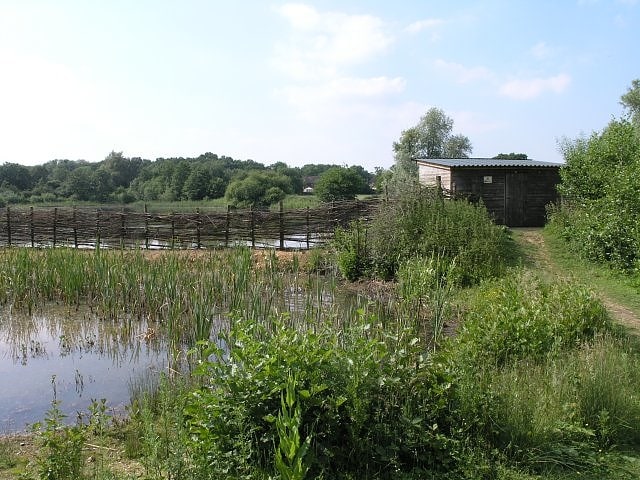
Gravel pit in England. Sevenoaks Gravel Pits is a 73.7-hectare biological Site of Special Scientific Interest on the northern outskirts of Sevenoaks in Kent. It is managed by Kent Wildlife Trust as the Sevenoaks Wildlife Reserve and Jeffery Harrison Visitor Centre.[8]
Montreal Park
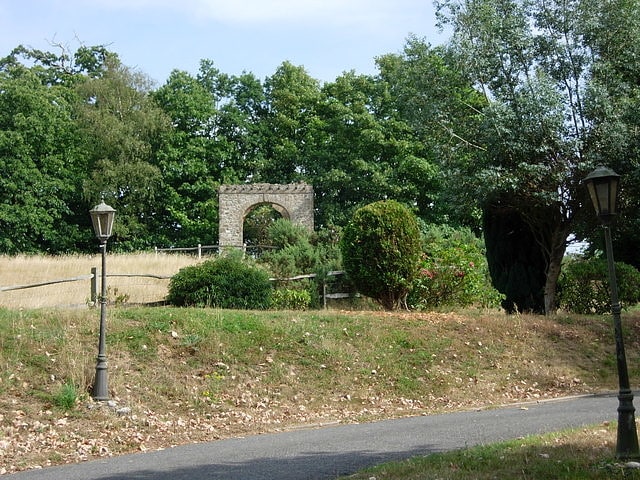
Park in Sevenoaks, England. Montreal Park is a development in Sevenoaks in Kent which was formerly the home of Lord Amherst, Commander-in-Chief of the Forces. It was named after his conquest of Montreal in 1760.[9]
THE CHAPEL Sevenoaks
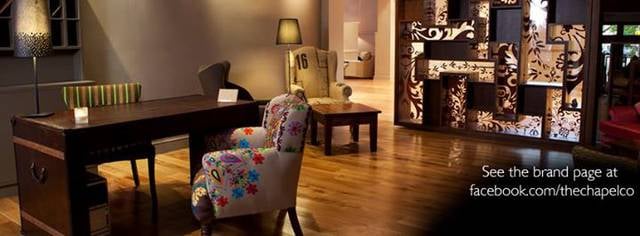
Address: 61b London Road, Sevenoaks